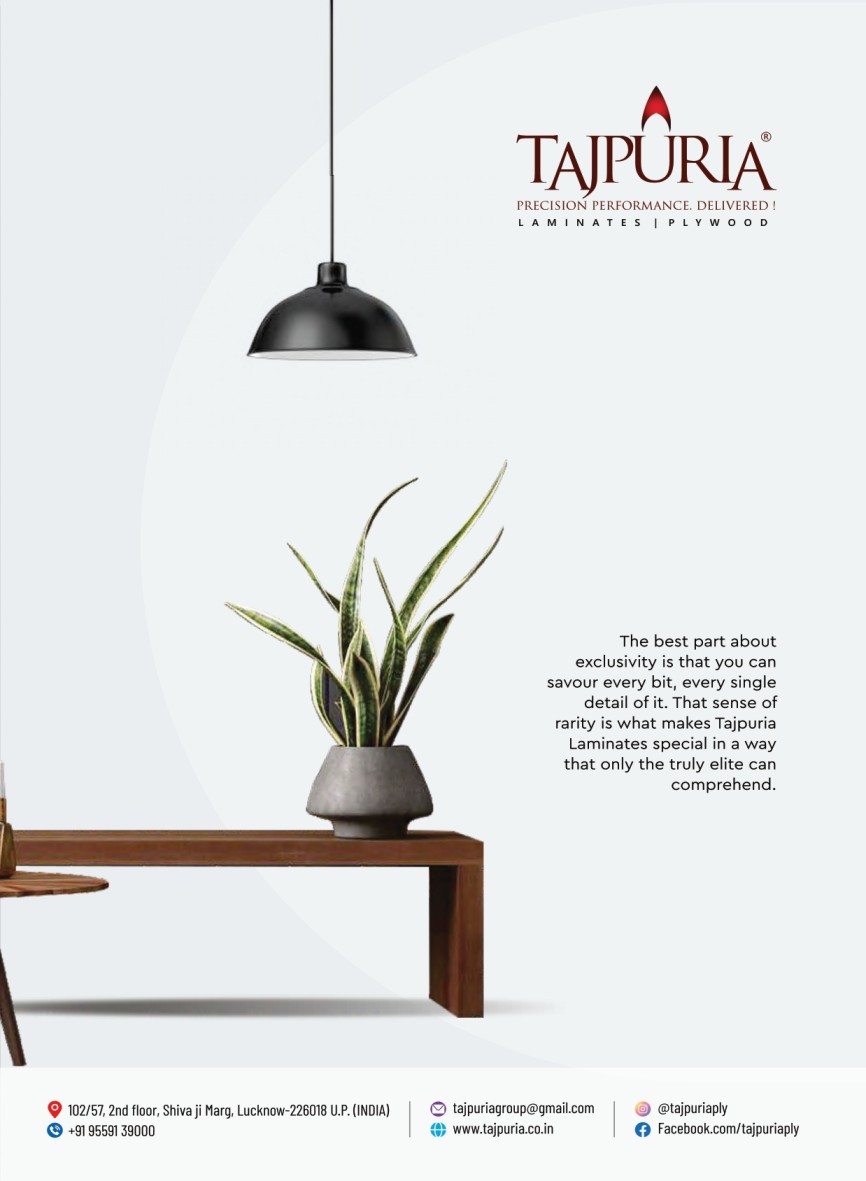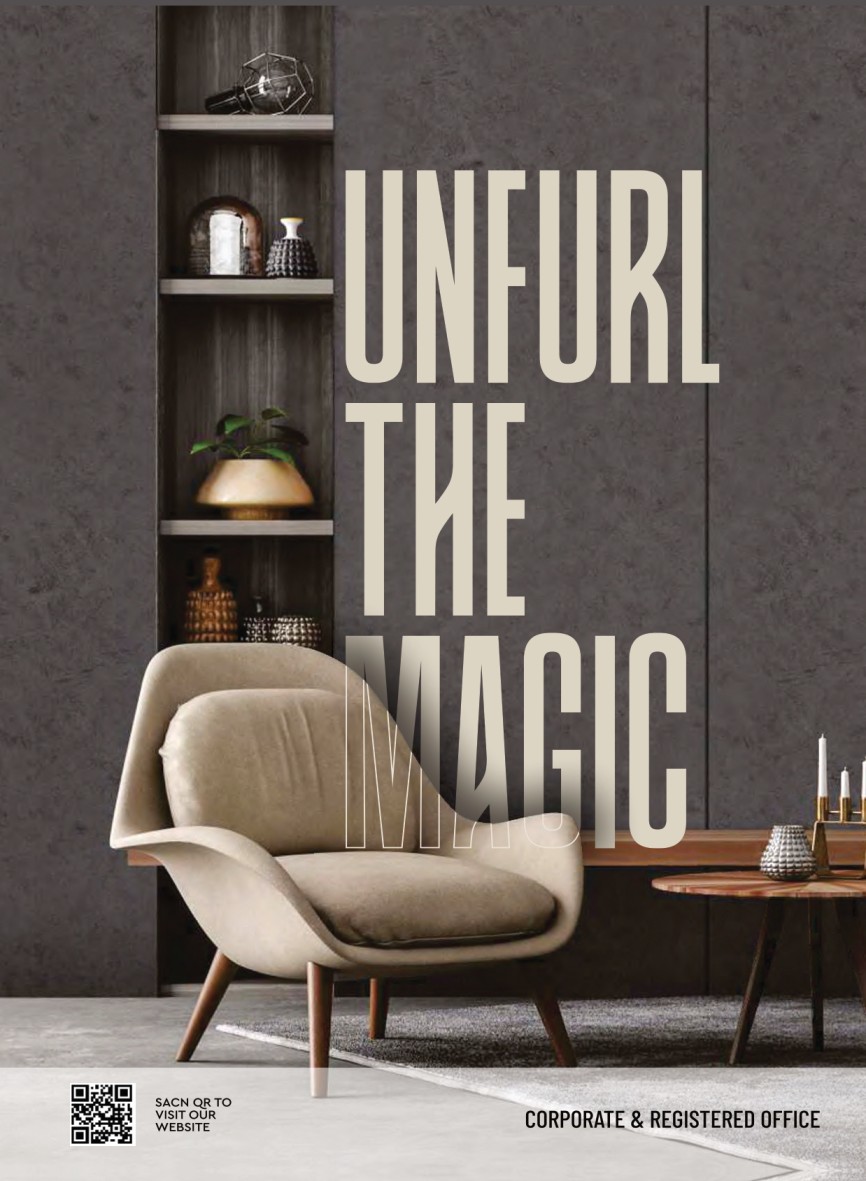
A.L.Patel – Geeta Plyboards Pvt Ltd
- February 11, 2023
- 0
Due to strict policies in Telangana both the wood based industry and farmers are in dilemma
As long as there is no balance between revenue and the environment, sustainable development cannot happen. The focus is on farm forestry but not on how to increase the income of farmers.
Timber availability in Telangana?
As a result of the policy formulated in Telangana to preserve the green zone, there has been a significant increase in forest area here. Cloned eucalyptus was first introduced in Telangana, which resulted in its large-scale commercial farming. But now, they are not getting the expected prices as the number of peeling units to consume the timber are very less, and thus the demand. On top of it, licences for new peeling units are not being approved. The whole emphasis is on increasing the forest area. As long as there is no balance between revenue and the environment, sustainable development cannot happen. The focus is on farm forestry but not on how to increase the income of farmers. Unless this direction is not worked on, there is less chance of improving the situation.
What kind of problem are you experiencing currently?
Telangana’s policies are based on an old set of rules and regulations. For instance, if there is a need to increase electricity consumption due to technical up gradation, even then we have to make a lot of effort. We have fewer units of plywood here. Despite the availability of timber, most units are making only doors. There is less requirement for core in the door industry, which is procured from outside. The timber of mango is mostly used to manufacture doors, which are mainly sourced from Andhra Pradesh. Our goal should be to increase the consumption of local timber. The government must change its policy to facilitate it. The farmers will venture into agroforestry only when they are going to make good profits from it. The government should encourage peeling, which will not only help the timber industry, but the farmer and the industry as well. Local timber can be used more efficiently if the peeling capacity increases here.
How is the market for doors?
The quality of mango timber available here is outstanding. The wood is well seasoned prior to use, thereby reducing the risk of deformation or other defects. This makes way for better-quality doors. As far as the market is concerned, we only work at a local level because the marketing for doors on all-India level is tough. However, we are supplying up to Maharashtra as going further would increase transportation costs. I feel that the marketing of plywood industry will be limited to local market only in future as the cost of transportation is increasing.
What is the scope of marketing door on an international level?
We need a different approach for the marketing of doors at the international level. One major reason is that doors are produced on a large scale in foreign countries and thus, their production cost is less. A unit can produce 1500- 2000 doors in a day. They have easy access to ready-to-use raw materials which they outsource, enabling them to produce more quickly. Currently, this facility is not available indigenously.
Apart from it, our Indian quality standards are different from international standards. At the international level, there are two types of doors – internal doors for privacy and external doors for safety. However, in India, only one type of door is prevalent, which is used both inside and outside. It has to be changed. Because if this kind of practice is adopted here, then Consumers could also save money on door expenses. The interior doors can be made from honeycomb or a similar less expensive, lightweight material. This will reduce production costs of interior doors which are made of solid wood.
Which face do you use?
We have successfully used HDHMR for doors. This makes the top surface flawless and smooth, making it much easier for carpenters to work. So far, 7’x8′ sheets were imported for this purpose, but now many indigenous manufacturers are also making available to us.
सख्त नीतियों की वजह से तेलंगाना में लकड़ी आधारित उद्योग और किसान दोनों परेशान हो रहे हैं
जब तक रेवेन्यू और हरियाली में संतुलन नहीं होगा, तब तक समुचित विकास नहीं हो सकता। फार्म फॉरेस्ट्री की बात तो हो रही है, लेकिन यह ध्यान नहीं रखा जा रहा है कि किसानों की आमदनी आखिर बढ़े कैसे?
उद्योग में लकड़ी की उपलब्धता?
हरियाली सहेजने के लिए तेलांगना में जो नीति बनाई गई है, उससे यहां वन क्षेत्र में काफी वृद्धि हुई है। यहां से क्लोन यूकेलिप्टिस की शुरुआत हुई थी, जिससे यहां बडे़ पैमाने पर यूकेलिप्टिस की एग्रो फार्मिंग हुई। लेकिन उन्हें वर्तमान में उत्साहित करने वाली कीमत नहीं मिल रही है। क्योंकि लकड़ी खपत करने के लिए आवश्यक पीलिंग युनिटों की संख्या बहुत कम है। और नई पीलिंग यूनिटों की इजाजत नहीं दी जा रही है। सारा जोर इस बात पर है कि हरियाली का क्षेत्र बढ़ाया जाए। जब तक रेवेन्यू और हरियाली में संतुलन नहीं होगा, तब तक समुचित विकास नहीं हो सकता। फार्म फॉरेस्ट्री की बात तो हो रही है, लेकिन यह ध्यान नहीं रखा जा रहा है कि किसानों की आमदनी आखिर बढ़े कैसे? जब तक इस दिशा में काम नहीं होगा, तब तक हालात में सुधार की संभावना कम है।
मौजूदा समय में आपको किस तरह की दिक्कत आ रही है?
तेलंगाना में नीतियां पुराने नियमों व प्रावधानों पर चल रही है। मसलन, चल रहे उद्योगों में तकनीकी बदलाव के लिए यदि बिजली की खपत बढ़ानी है, तो उसके लिए भी काफी मशक्कत करनी पड़ती है। यहां प्लाईवुड बनाने वाली यूनिटें कम है। राज्य में लकड़ी की उपलब्धता होने के बावजूद अधिकतर यूनिटों में सिर्फ दरवाजे ही बनाए जाते हैं। डोर इंडस्ट्री में कोर की आवश्यकता कम पड़ती है। जिसें हम बाहर से खरीद लेते हैं। अधिकांशतः आम की लकड़ी का डोर में प्रयोग होता है, जो कि मुख्यतः आंध्र प्रदेश से आती है। हम चाहते हैं कि यहां स्थानीय लकड़ी की खपत बढ़े। इसके लिए सरकार को अपनी पॉलिसी में बदलाव करना चाहिए। क्योंकि किसान तभी तो एग्रोफोरेस्ट्री करेगा, जब उन्हें इस पर अच्छा मुनाफा मिलेगा। सरकार को चाहिए कि पीलिंग को बढ़ावा दें। क्योंकि इससे लकड़ी आधारित उद्योग को बढ़ावा मिलेगा। इससे किसान और इंडस्ट्री दोनो को लाभ होगा। यदि यहां पीलिंग की क्षमता बढ़ेगी तो स्थानीय लकड़ी का बेहतर इस्तेमाल हो सकता हैं।
दरवाजे (डोर) की मार्केट कैसी है?
यहां मिलने वाले आम की लकड़ी की गुणवत्ता काफी अच्छी है। लकड़ी को सही से सीजनिंग कर इसका इस्तेमाल किया जाता हैं। जिससे बोरर या दुसरे दोषों की संभावना लगभग खत्म हो जाती है। जिससे बेहतर क्वालिटी के डोर तैयार हो जाते है। जहां तक मार्केट की बात है तो हम स्थानीय स्तर पर ही काम करते हैं। क्योंकि डोर की मार्केटिंग आल इंडिया लेवल पर कम है। फिर भी हम महाराष्ट्र तक माल सप्लाई कर रहे हैं। क्योंकि इससे ज्यादा दूर जाने में किराए की लागत बढ़ जाती है। मुझे तो ऐसा लगता है कि आने वाले दिनों में प्लाइवुड इंडस्ट्री भी अब स्थानीय मार्केट में ही माल सप्लाई कर पाएगी। क्योंकि किराये की लागत बढ़ रही है।
अंतरराष्ट्रीय स्तर पर डोर की मार्केटिंग की संभावना क्या है?
इसके अलावा अंतरराष्ट्रीय स्तर पर दरवाजें की मार्केटिंग के लिए अलग तरह से प्रयोग की आवश्यकता है। एक तो बड़ी वजह यह है कि विदेश में प्रत्येक ईकाई में बड़े पैमाने पर डोर का उत्पादन होता है। इस वजह से उनकी उत्पादन लागत कम हो जाती है। एक यूनिट में एक दिन में 1500-2000 हजार तक दरवाजे का उत्पादन हो जाता है। इसके लिए उनके आस पास रेडीमेड रा मैटेरियल उपलब्ध है, जिसे वह आउटसोर्स कर लेते हैं। जिससे वह उत्पादन तेजी से कर पाते हैं। यहां इस तरह की सुविधा फिलहाल नहीं है।
इसके अलावा हमारे भारत के गुणवत्ता मानक और अंतरराष्ट्रीय मानक में भी अंतर है। अंतरराष्ट्रीय स्तर पर दो तरह के दरवाजे हैं। एक अंदर लगने वाले दरवाजे – इंटीरियर डोर, जो कि प्राइवेसी के लिए हैं, दुसरे एक्सटीरियर डोर, जो बाहर के लिए होता है, वह सुरक्षा की दृष्टि से होता है। लेकिन भारत में सिर्फ एक ही तरह के दरवाजे का प्रचलन है। जो अंदर और बाहर दोनों जगह प्रयोग होता है। इस तरह का कल्चर बदलने की जरूरत है। क्योंकि यदि हमारे यहां इस तरह की सोच बन जाए तो यहां भी उपभोक्ताओं का दरवाजे का खर्च कम हो सकता है। इंटीरियर दरवाजे पर हनीकॉम या इसी तरह का सस्ता और (वजन में) हल्का मैटेरियल प्रयोग हो सकता है। इससे उत्पादन लागत भी कम हो जाती है। लेकिन यहां तो अंदर के लिए प्रयोग होने वाले दरवाजे में भी ठोस लकड़ी चाहिए।
फेस कौन-सा इस्तेमाल करते हैं?
दरवाजे में HDHMR लगाने का हमने सफल प्रयोग किया है। इससे उपरी सतह दोषरहित और चिकनी हो जाती है, जिससे कारीगर को काम करने में काफी सहुलियत हो गयी है। इसके लिए अभी तक तो 7’X8′ की शीट आयात ही की जाती थी। लेकिन अब कई घरेलु उत्पादक भी हमें यह उपलब्ध करवा रहें हैं।































































